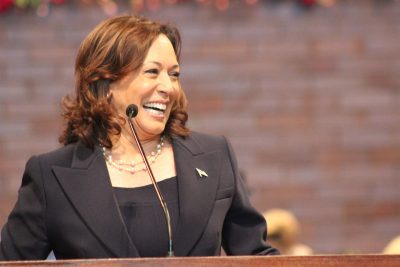Workers across South Dakota are earning significantly more than the federal minimum wage requires, thanks to state policies that prioritize keeping pace with rising living costs. While many Americans struggle with wages that haven’t increased federally since 2009, South Dakota has taken a different approach that benefits thousands of workers throughout the state.
The difference between South Dakota’s minimum wage and the federal standard represents more than just numbers on a paycheck—it reflects a fundamental policy choice about how to support working families in an era of rising costs. This gap has real implications for workers trying to make ends meet and businesses adapting to higher labor costs.
Understanding how South Dakota’s wage policies work and compare to other states reveals important insights about different approaches to supporting low-wage workers. The state’s system of automatic annual adjustments creates predictability for both workers and employers while ensuring wages don’t lose purchasing power over time.
South Dakota’s progressive wage policy
South Dakota currently maintains a minimum wage of $11.50 per hour, which increased from $11.30 at the beginning of 2025. This rate stands significantly higher than the federal minimum wage of $7.25 per hour, creating a substantial difference that puts extra money in workers’ pockets throughout the state.
The state’s approach differs markedly from the federal system, where the minimum wage has remained frozen at $7.25 since 2009. This 16-year period without federal increases has left many workers across the country struggling to maintain their standard of living as costs for housing, food, and other necessities have risen dramatically.
South Dakota’s commitment to regular wage adjustments demonstrates a recognition that static wages become poverty wages over time. The state’s policy acknowledges that maintaining worker purchasing power requires ongoing attention rather than sporadic legislative action that may occur years apart.
The automatic nature of South Dakota’s wage increases removes political battles from the equation, creating a system where wages adjust based on economic data rather than political negotiations. This approach provides stability and predictability that benefits both workers planning their finances and businesses projecting labor costs.
How the annual adjustment system works
South Dakota’s minimum wage increases annually based on changes in the Consumer Price Index, which measures the cost of living across various goods and services. This automatic adjustment mechanism ensures that wage growth keeps pace with inflation without requiring new legislation each year.
The Consumer Price Index calculation considers costs for housing, food, transportation, medical care, and other essential expenses that impact workers’ daily lives. When these costs rise, the minimum wage adjusts accordingly to help maintain workers’ purchasing power.
This system prevents the erosion of wages that occurs when minimum wage rates remain static while living costs increase. Workers benefit from knowing their wages will adjust to reflect economic conditions rather than remaining frozen for years at a time.
The predictable nature of these adjustments helps businesses plan their labor costs and pricing strategies. Rather than facing sudden large wage increases, employers can anticipate gradual adjustments that align with broader economic trends.
Regional wage comparison reveals significant differences
South Dakota’s minimum wage policy places it in the middle range among regional states, with some neighbors maintaining much lower rates while others exceed South Dakota’s standard. These differences create varying economic conditions for workers depending on where they live and work.
North Dakota, Wyoming, and Iowa all maintain minimum wages set at the federal rate of $7.25 per hour. This means workers in these states earn $4.25 less per hour than their counterparts in South Dakota, creating a significant income gap for similar work.
Nebraska stands out in the region with a minimum wage of $13.50 per hour, which exceeds South Dakota’s rate by $2.00. This higher rate reflects Nebraska’s decision to set an even more aggressive wage floor for its workers.
Minnesota’s minimum wage of $11.13 per hour falls slightly below South Dakota’s rate, though both states maintain wages significantly above the federal standard. These small differences can still impact worker decisions about where to seek employment.
The poverty wage reality
The federal minimum wage of $7.25 per hour creates annual earnings of approximately $15,080 for full-time workers, which falls below the federal poverty guideline of $15,650 for a single person. This gap means that full-time minimum wage workers at the federal rate are officially earning poverty-level wages.
South Dakota’s higher minimum wage of $11.50 per hour generates annual earnings of approximately $23,920 for full-time work, placing workers well above the poverty threshold. This difference demonstrates how state wage policies can lift workers out of poverty-level earnings.
The poverty wage reality affects millions of workers nationwide who earn the federal minimum wage. These workers often struggle to afford basic necessities like housing, food, and healthcare even while working full-time jobs.
Higher state minimum wages like South Dakota’s help address this challenge by ensuring workers can earn above-poverty incomes through full-time employment. This approach reduces reliance on government assistance programs while supporting worker dignity and economic stability.
Economic impact on workers and families
The $4.25 per hour difference between South Dakota’s minimum wage and the federal rate translates to an additional $170 per week for full-time workers. Over a full year, this amounts to approximately $8,840 in additional income that supports local spending and economic activity.
This extra income helps workers afford necessities like housing, food, and transportation that consume large portions of low-wage earners’ budgets. The additional purchasing power strengthens local economies as workers spend their wages on goods and services in their communities.
Families benefit from the higher wages through improved ability to provide for children’s needs, including clothing, school supplies, and educational activities. The wage difference can mean the difference between struggling to make ends meet and achieving basic financial stability.
The multiplier effect of higher wages spreads throughout local economies as workers spend their additional income at local businesses. This increased economic activity can create additional jobs and business opportunities in communities across South Dakota.
Business perspectives on wage policies
Employers in South Dakota must navigate the balance between higher labor costs and the benefits of a more financially stable workforce. While higher wages increase operational expenses, they can also reduce employee turnover and improve productivity.
The predictable nature of South Dakota’s annual wage adjustments allows businesses to plan their budgets and pricing strategies with greater certainty. This stability can be preferable to sudden large wage increases that might occur through legislative action.
Some businesses find that higher wages help attract and retain quality employees, reducing recruitment and training costs associated with high turnover. The competitive advantage of offering above-poverty wages can improve workforce quality and customer service.
Small businesses may face greater challenges absorbing wage increases compared to larger companies with more financial flexibility. However, the gradual nature of South Dakota’s adjustments helps businesses adapt over time rather than facing sudden cost shocks.
Comparison with other state approaches
States across the country have adopted various approaches to minimum wage policy, from maintaining federal rates to implementing much higher standards. These different strategies reflect varying political philosophies and economic conditions.
Some states have implemented gradual phase-ins toward higher minimum wages, eventually reaching $15 or more per hour. These approaches provide businesses time to adjust while working toward substantial wage improvements for workers.
Other states tie minimum wage increases to inflation or cost-of-living measures similar to South Dakota’s approach. This automatic adjustment method removes political negotiations from wage decisions while ensuring ongoing worker protection.
A few states have implemented regional variations in minimum wages, recognizing that living costs vary significantly between urban and rural areas. These approaches attempt to balance economic differences while maintaining statewide wage standards.
The ongoing debate about wage adequacy
While South Dakota’s minimum wage exceeds federal standards, debates continue about whether current levels provide adequate support for workers and families. The concept of a “living wage” that covers basic needs often requires hourly rates higher than current minimum wage levels.
Housing costs in particular can consume large portions of minimum wage earners’ incomes, even in states with higher wage standards. The challenge of affordable housing affects workers across wage levels but impacts minimum wage earners most severely.
Healthcare costs, childcare expenses, and transportation needs create additional financial pressures that minimum wage policies must consider. The adequacy of any minimum wage depends on the total cost of living in specific areas and family circumstances.
Education and skill development opportunities can help workers advance beyond minimum wage positions, but access to these opportunities often depends on having sufficient income to invest in training and development while meeting basic needs.
Future considerations for wage policy
South Dakota’s approach to minimum wage adjustments provides a model for maintaining wage adequacy over time without requiring constant political intervention. The success of this approach may influence policy discussions in other states considering similar measures.
Economic conditions and inflation rates will continue to influence the effectiveness of automatic adjustment mechanisms. Periods of high inflation may require additional policy considerations to ensure wage adjustments remain adequate.
The relationship between minimum wages and other economic policies, including housing assistance, healthcare access, and education funding, affects the overall adequacy of support for low-wage workers. Comprehensive approaches may be necessary to address worker needs effectively.
Ongoing research into the economic effects of different minimum wage policies provides valuable information for policymakers considering various approaches. The experiences of states like South Dakota contribute to understanding effective wage policy implementation.
Worker empowerment through wage policy
South Dakota’s minimum wage policy demonstrates how state-level action can provide meaningful support for workers even when federal policies remain static. This approach empowers workers by ensuring their wages maintain purchasing power over time.
The automatic adjustment mechanism removes uncertainty about future wage changes, allowing workers to plan their finances with greater confidence. This predictability supports long-term financial planning and stability for low-wage workers and their families.
Higher minimum wages can provide workers with greater bargaining power in the job market, as employers must compete for workers at higher wage levels. This dynamic can improve working conditions and opportunities for advancement beyond minimum wage positions.
The dignity of work is enhanced when wages provide adequate compensation for full-time employment. South Dakota’s approach supports the principle that working families should be able to achieve basic economic security through their labor.










